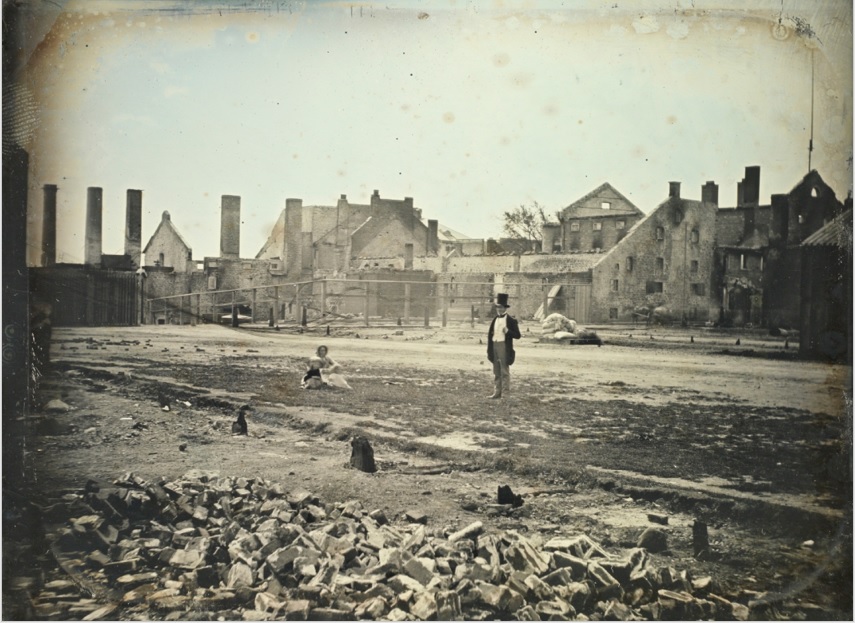Lingua franca – Chapter 2: Condition issues
On this page

Condition issues
Weeping glass
This condition is caused by an inherent fault in the chemical composition of the original glass formula. Exposure to high levels of relative humidity during storage or display causes salts to hydrate and leach out of the glass. Alkaline droplets then form on the surface and appear as if the glass is crying or weeping.


Tarnish
Photographs on metal supports are subject to corrosion and degradation caused by oxidation of the metal. The surface of a daguerreotype is susceptible to tarnish. Tarnish on daguerreotypes is composed of silver sulphide, silver oxide and silver chloride. Tarnish may appear at the edge of the brass window mat opening or over the entire plate. It can be characterized by a series of interference colours and/or pale grey, blue, green, brown or black.

Mould
Minute organisms known as mould spiders grow and feed on organic matter in high relative humidity, high temperature and stagnant air. Mould can be identified by white or beige tendrils with a well-defined elevated centre growing on the surface of photographic material.

Loss
A missing fragment of the support or emulsion layer on a photograph.

Tear
A split in a photograph support or emulsion caused by it having been pulled apart forcefully.

Crease
A line, groove or ridge made by folding or crushing where the surface of a photograph remains unbroken. It can be caused unintentionally when a substrate bends over itself.

Credit: Yousuf Karsh
Bend
A bend in a material that may result in a crack or break in the emulsion / support, as one part of the emulsion or support is laid over itself.


Abrasion
The physical process of scraping, roughening or wearing away an object's surface due to repeated friction or contact with other surfaces.

Scratch
Physical damage which causes an indentation. The term usually implies that there has been some loss to the support or emulsion layer of a photograph.

Silver mirroring
Silver Mirroring is a bluish-metallic deposit or sheen cause by a physical alteration of the colloidal surface of a photographic emulsion. It can change in reflective light and appear iridescent, even bronze in colour if severe. Over time, air pollutants in the presence of heat and moisture can create a sustained migration of silver ions in all directions.

Fingerprint
A mark left on the surface of a photograph caused by the oil, dirt or salt from perspiration found on a fingertip.

Cockling
Wrinkling or puckering in a wave-like manner that occurs when a photograph or a support dries unevenly or due to an extreme change in relative humidity.

Credit: Yousuf Karsh
Yellow discolouration
A change in colour of a photographic emulsion or a support, usually to a darker, more yellow or brown appearance. May be caused by light damage or exposure to acidic substances.

Puncture
Physical damage caused by a sharp object, resulting in a loss of the photographic emulsion and/or support.

Stain
A discolouration that is caused by chemical or physical interaction between different materials.

Flaking of emulsion
A small piece or fragment of emulsion that peels or falls away from the photographic support resulting in physical damage.
